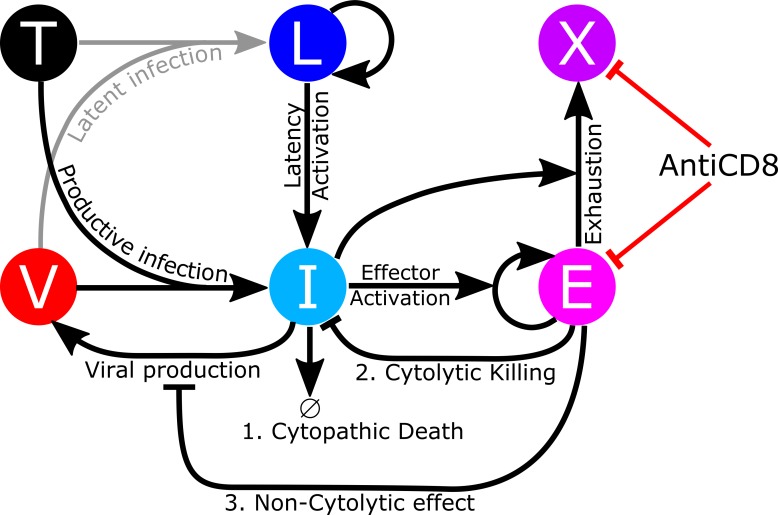Fig 1. The cytotoxic T lymphocytes viral control (CTL-VC) model explicitly incorporates CD8 cytolytic killing and non-cytolytic effects on viral suppression, as well as antigen-induced CD8 T cell exhaustion.
Virus (V) can infect target cells (T) through two pathways. A small fraction of the infection events generates latently infected cells (L) and the remaining fraction generate productively infected cells (I). Latently infected cells (L) can be activated into productively infected cells (I). Viruses are produced from productively infected cells (I). Latently infected cells (L) can proliferate. Productively infected cells (I) can die due to cytopathic effects or can be killed by SIV-specific CD8 cytolytic T lymphocytes (E) through cytolytic effects. CTL effector cells (E) can suppress the viral production from productively infected cells (I) through non-cytolytic effects. Productively infected cells (I) activate the effector cells (E) into clonal expansion and simultaneously exhaust the effector cells (E) into exhausted state (X). Anti-CD8 antibody deplete both effector and exhausted cells. The generation and death of target cells (T) and effector cells (E) and the death of exhausted cells (X) and the clearance of virions (V) are omitted from the diagram.

